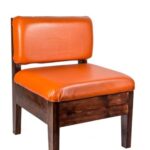With the increasing number of devices that rely on a strong and stable internet connection, having a reliable wifi network has become essential for many households. However, it is not uncommon to experience frustratingly slow speeds or dead spots in certain areas of your home. This is where the untapped potential of your home outlets comes into play. Home outlets can be utilized to improve your wifi signal and ensure seamless connectivity throughout your space.
In this article, we will explore the various ways in which you can use home outlets to enhance your wifi network. From understanding how home outlets affect wifi signal strength to utilizing powerline adapters and outlet extenders, we will provide you with step-by-step guides and pro tips to optimize your wifi performance.
Before delving into the technical aspects, it is important to recognize the importance of a strong and stable wifi connection. We rely on our wifi networks for a myriad of tasks such as streaming movies, working remotely, online gaming, and connecting smart devices. A weak or unreliable wifi signal can hinder these activities and cause frustration. By utilizing the potential of your home outlets, you can unlock the full potential of your wifi network and ensure a seamless connectivity experience.
Stay tuned as we explore the basics of how home outlets affect wifi signal strength and identify common pain points that may be affecting your network coverage. Get ready to empower your connectivity with home outlets and unleash the true potential of your wifi network.
Overview of Home Outlets as a Potential Solution
Home outlets have traditionally been used for powering electrical devices, but they also hold untapped potential as a solution for improving wifi in your home. Many people are unaware that home outlets can be utilized to enhance wifi signal strength and extend network coverage.
By understanding the basics of how home outlets affect wifi signal and exploring different methods such as powerline adapters, outlet extenders, and transforming power outlets into wifi access points, you can unlock the full potential of your wifi network.
One of the key ways in which home outlets can improve wifi is through the use of powerline adapters. These adapters leverage the existing electrical wiring in your home to extend your network coverage.
Powerline adapters work by transmitting data signals over your electrical wiring, essentially turning any power outlet into an ethernet connection. This allows you to connect your router to an adapter near a power outlet and then connect another adapter at a different location in your home to create a wired connection for improved wifi performance.
Another method for utilizing home outlets to enhance wifi is through the use of outlet extenders or boosters. These devices essentially expand the reach of your wifi network by amplifying the signal from your router. Outlet extenders are typically plugged into a power outlet between your router and areas with weak signal strength. They pick up the existing signal from your router, amplify it, and then rebroadcast it, effectively extending the range of your wifi network.
Transforming power outlets into wifi access points is yet another way to make use of these underutilized resources. By converting a power outlet into a dedicated wifi access point, you can expand the coverage area and improve signal strength in specific parts of your home.
This method involves using a device that connects directly to a power outlet and creates its own wireless network. It essentially acts as an additional router that extends your existing network’s reach without sacrificing speed or performance.
By harnessing the untapped potential of our home outlets, we can significantly improve our wifi experience. Whether through the use of powerline adapters, outlet extenders, or transforming outlets into access points, there are multiple options available to enhance our wifi signals and extend network coverage.
Understanding the basics of how home outlets affect wifi signal strength is crucial in identifying common pain points and finding suitable solutions. In the next sections, we will delve deeper into these methods and provide step-by-step guides for utilizing home outlets to boost our wifi performance.
| Method | Description |
|---|---|
| Powerline Adapters | Use existing electrical wiring to extend network coverage. |
| Outlet Extenders/Boosters | Amplify and rebroadcast wifi signals for extended range. |
| Transforming Outlets into Access Points | Create additional wireless networks for improved coverage. |
Understanding the Basics
Home outlets may seem like unrelated elements to consider when it comes to improving Wi-Fi signal strength, but they actually play a significant role in the overall performance of your wireless network. In this section, we will explore how home outlets affect Wi-Fi signal strength and why understanding their impact is crucial for achieving a strong and stable connection.
Electrical Interference
One of the key ways that home outlets can affect Wi-Fi signal strength is through electrical interference. Electrical devices that are connected to power outlets, such as appliances or electronics, generate electromagnetic radiation. This radiation can potentially interfere with the radio waves used by Wi-Fi signals, leading to a decrease in signal quality and coverage.
It’s important to note that not all electrical devices will cause interference to the same extent. Appliances with motors, such as refrigerators or washing machines, tend to produce more electromagnetic radiation compared to other devices. Additionally, older or poorly shielded electronics may also contribute to interference. Understanding which devices in your home may be causing interference can help you identify and mitigate issues affecting your Wi-Fi signal.
Distance from Router
The distance between your Wi-Fi router and your power outlet can also impact signal strength. The farther away a device is from the router, the weaker the signal it receives tends to be. If your power outlet is located far away from your router, you may experience reduced Wi-Fi performance in that specific area of your home.
To optimize signal strength, consider positioning your router closer to frequently used power outlets or finding alternative solutions such as outlet extenders or powerline adapters (discussed later in this article) that allow for better coverage across larger distances.
Wall Materials
The type of wall materials between your router and power outlets can contribute to signal degradation as well. Certain building materials like concrete, brick, or metal can hinder Wi-Fi signals from passing through easily. These materials can limit signal propagation, resulting in weaker Wi-Fi coverage in areas that are separated by such walls.
If you notice significant drops in Wi-Fi signal quality when moving from one room to another, it may be worth examining the type of wall materials present and considering alternative router or outlet placement to overcome any obstructions.
By understanding these basic factors that influence how home outlets affect Wi-Fi signal strength, you can take appropriate measures to mitigate any issues and optimize your wireless network. Let’s explore various solutions and techniques in the following sections to unlock the full potential of your Wi-Fi network using home outlets.
Identifying Common Wifi Pain Points
In order to effectively improve your wifi signal using home outlets, it is important to first identify the common pain points that affect wifi speed and coverage in your home. By understanding these factors, you can better assess which solutions will work best for your specific situation. Here are some common issues that may be impacting your wifi performance:
- Distance from Router: The further away you are from your router, the weaker your wifi signal will be. Thick walls and other obstructions can also weaken the signal. If you have areas of your home where the wifi connection is slow or nonexistent, this could be due to a weak signal caused by distance or obstacles.
- Interference from Other Devices: Wifi signals can be disrupted by other electronic devices such as cordless phones, baby monitors, microwaves, and even Bluetooth devices. These devices operate on similar frequencies as wifi signals and can cause interference, leading to slower speeds or dropped connections.
- Network Congestion: In crowded neighborhoods or apartment buildings with many wifi networks nearby, network congestion can occur. This happens when multiple networks are competing for bandwidth, resulting in slower speeds and decreased performance.
To address these pain points and improve your wifi experience, there are several solutions available that utilize home outlets. Powerline adapters are one option that extends network coverage by using existing electrical wiring in your home to transmit data signals.
Outlet boosters or extenders amplify the strength of the wifi signal coming from your router towards areas with poor coverage. Additionally, turning power outlets into wifi access points allows you to expand the range of your network by making use of multiple outlets throughout your home.
By recognizing what is causing weak or unreliable wifi connections in your home, you can choose an appropriate solution that utilizes home outlets to eliminate these pain points and enhance your overall wireless experience.
Boosting Wifi Signal with Powerline Adapters
What are Powerline Adapters?
Powerline adapters are devices that allow you to extend your Wi-Fi network using your home’s electrical wiring. They work by transforming your power outlets into internet access points, enabling you to establish a wired connection between your router and other devices throughout your home. Powerline adapters consist of two units: one that connects to your router and another that plugs into an electrical outlet in the desired area of coverage.
Step-by-Step Guide on Setting Up Powerline Adapters
To boost your Wi-Fi signal with powerline adapters, follow these simple steps:
- Choose the right powerline adapter: Start by selecting a reliable and high-performing powerline adapter that suits the needs of your home network. Consider factors such as data transfer speeds, encryption capabilities, and the number of Ethernet ports available.
- Identify suitable outlets: Determine which outlets in your home would be most beneficial for extending the network coverage. Ideally, these should be in areas where you experience weak signal strength or dead zones.
- Plug in the first unit: Connect one end of an Ethernet cable to the LAN port on the powerline adapter and the other end to an available LAN port on your router. Then, plug the powerline adapter directly into a nearby electrical outlet.
- Set up the second unit: Take the second powerline adaptor and plug it into an electrical outlet in a location where you want to improve network coverage. Connect another Ethernet cable from this unit’s LAN port to your device’s Ethernet port (e.g., computer, gaming console).
- Configure and test your connection: Once both units are securely plugged in, wait for them to establish a stable connection via the electrical wiring. You can typically do this by pressing a synchronization button on each unit or using a software utility provided by the manufacturer. Finally, test your new extended network connection by checking signal strength and speed on your device.
Benefits of Powerline Adapters
Using powerline adapters to boost your Wi-Fi signal offers several benefits. Firstly, it eliminates the need for long Ethernet cables or complex network wiring installations, providing a convenient solution for extending network coverage throughout your home. Powerline adapters also ensure a more stable and reliable connection by minimizing the impact of physical obstacles or interference that can weaken Wi-Fi signals.
Furthermore, powerline adapters are suitable for homes with thick walls or multiple floors, where traditional Wi-Fi routers may struggle to provide adequate coverage. By leveraging the electrical wiring already in place, powerline adapters offer a cost-effective way to enhance connectivity without the need for additional hardware investments. Additionally, they enable you to connect devices that require a wired internet connection in areas that were previously inaccessible.
By following this step-by-step guide and understanding the benefits of powerline adapters, you can make use of your home outlets to extend your Wi-Fi network’s range and improve overall signal strength and stability.
Enhancing Wifi Quality with Outlet Extenders
Outlet extenders, also known as outlet boosters or Wi-Fi range extenders, can be a game-changer when it comes to enhancing the quality of your Wi-Fi signal. These devices work by amplifying the existing Wi-Fi signal and extending its range to areas that are farther away from the router. This section will explore the benefits of outlet extenders and provide a step-by-step guide on how to set them up.
Benefits of Outlet Extenders
- Expanded Coverage: One of the main advantages of outlet extenders is that they help eliminate Wi-Fi dead zones in your home. Dead zones are areas where the Wi-Fi signal is weak or inaccessible, often due to distance or physical obstacles like walls or furniture. By extending the range of your Wi-Fi signal, outlet extenders ensure that you have a strong and stable connection throughout your home.
- Improved Connectivity: With an outlet extender, you can connect multiple devices simultaneously without experiencing any lag or drop in speed. This is especially beneficial for households with multiple users who stream videos, play online games, or work from home. Outlet boosters ensure that all devices receive a reliable and consistent internet connection.
- Ease of Use: Outlet extenders are designed to be user-friendly and easy to install. In most cases, all you need to do is plug them into a power outlet within range of your existing Wi-Fi network and follow a few simple steps for setup. They typically come with instructions or an app that guides you through the installation process.
Setup Process
- Choose an appropriate location: Select an area in your home where the existing Wi-Fi signal is still strong but slightly weak towards the desired extended coverage area.
- Plug in the outlet extender: Plug the outlet extender into a power outlet located within the range of your existing Wi-Fi network.
- Connect to the extender: Use your phone or computer to connect to the Wi-Fi network created by the extender. This network will have a different name than your main router’s network.
- Follow the setup instructions: Depending on the brand and model of your outlet extender, you may need to use a mobile app or access a web interface to complete the installation process. Follow the provided instructions carefully, including entering your existing Wi-Fi network’s password for the extender to sync with it.
- Test and optimize: Once set up, test the extended network’s signal strength in different areas of your home. If necessary, adjust the placement of both your router and outlet extenders to achieve optimal coverage.
By adding outlet extenders to your home, you can improve and extend your Wi-Fi coverage effortlessly. With expanded coverage and improved connectivity, you can enjoy seamless internet access in every corner of your home without any interruptions or weak signals.
Transforming Power Outlets into Wifi Access Points
In today’s connected world, having a strong and stable wifi connection is essential. Slow internet speeds and unreliable coverage can be frustrating, especially when you’re trying to work or stream your favorite shows. Fortunately, there is a solution that you may not have considered – transforming power outlets into wifi access points.
Power outlets are often overlooked as potential solutions for improving wifi because they are commonly associated solely with electricity. However, with the right tools and setup, you can utilize these outlets to expand your wifi range and enhance your network coverage throughout your home.
One effective way to transform power outlets into wifi access points is by using powerline adapters. These adapters leverage the existing electrical wiring in your home to transmit data signals. Essentially, they create a wired connection between your router and any other power outlet in your house, effectively extending your network coverage.
To make use of powerline adapters, you’ll need at least two adapters; one connected to your router and another plugged into a power outlet in the area where you want to improve wifi coverage. The process usually involves plugging one adapter into an electrical outlet near your router and connecting it to the router via Ethernet cable.
Then, plug the second adapter into a power outlet in the desired area and connect it to the device you want to have better wifi coverage. This could be a computer, smart TV, or even another wireless access point.
Another option for enhancing wifi using power outlets is through outlet extenders. These devices function similarly to powerline adapters but instead are designed specifically for boosting wireless signal strength. Outlet extenders plug directly into an electrical outlet like any other device but act as an intermediary between your router and wireless devices that may be struggling with weak wifi signals.
Setting up an outlet extender typically involves plugging it into an electrical outlet within range of both your router and the area with weak wifi signal. Once connected, you can configure the extender’s settings to match your existing wifi network. This will effectively amplify the wifi signal in the specific area where it is plugged in, providing better coverage and connectivity.
By harnessing the power of home outlets, you can effectively extend your wifi range and enhance your network’s coverage throughout your home. Whether you choose to use powerline adapters or outlet extenders, remember to follow the respective setup processes outlined by the manufacturers for optimal performance. With these solutions, you’ll never have to worry about slow internet speeds or weak connection again.
Optimizing Wifi Performance with Outlet Placement
Understanding the Impact of Outlet Placement on Wifi Performance
One of the key factors that can significantly affect your wifi performance is the placement of your router and adapters. The position of these devices in relation to your power outlets plays a crucial role in ensuring maximum signal strength and coverage throughout your home.
The first step in optimizing wifi performance with outlet placement is to understand how signals propagate and how they can be obstructed. Wifi signals are transmitted via radio waves, which can be absorbed or reflected by different materials such as walls, furniture, and even appliances. This means that the position of your router and adapters relative to these obstacles can greatly impact signal quality and coverage.
Pro Tips for Router Placement
When it comes to router placement, there are a few best practices that you should keep in mind:
- Centralized Location: Ideally, place your router in a central area of your home where the signal can reach all areas evenly. This will help minimize dead zones and ensure consistent wifi coverage throughout.
- Elevated Position: Try to position your router at an elevated location, such as on a shelf or mounted on a wall. This helps to reduce interference from obstructions at ground level and improves signal propagation.
- Avoid Obstacles: Keep your router away from dense objects like walls, metal surfaces, large appliances, or thick furniture that can obstruct or absorb wifi signals. It’s also advisable to avoid placing it near devices that emit electromagnetic interference (EMI), such as microwaves or cordless phones.
- Antenna Orientation: If your router has external antennas, experiment with their orientation to find the optimal setup for maximum signal strength. In general, pointing them perpendicularly (one straight up and one perpendicular) tends to provide better coverage in multiple directions.
Optimizing Adapter Placement with Powerline Adapters
If you’re using powerline adapters to extend your network coverage, their placement is equally important for optimal wifi performance. Here are some tips to keep in mind:
- Direct Connection: Connect one end of the powerline adapter directly into a power outlet near your router, rather than plugging it into a power strip or surge protector. This helps reduce signal loss and interference.
- Dedicated Outlet: Plug the other end of the powerline adapter into a dedicated electrical outlet near the area where you need to extend wifi coverage. Avoid sharing the same outlet with other high-powered electronic devices like refrigerators or air conditioners, as they can introduce electrical noise that may interfere with the signal.
- Signal Strength Indicator: Most powerline adapters have built-in indicators that show the strength of the connection between them. Use these indicators to find the best outlets for optimal performance, ensuring a strong and stable connection.
By following these pro tips for both router and adapter placement, you can ensure that your wifi network operates at its fullest potential, providing reliable connectivity and fast speeds throughout your home.
Troubleshooting and Overcoming Common Challenges
In order to achieve a seamless wifi experience while utilizing home outlets to improve your network, it is important to address common challenges and overcome interference and technical issues. By doing so, you can ensure that your wifi signal remains strong and uninterrupted throughout your home.
One common challenge that many people face is interference from other devices. In a crowded wireless environment, such as an apartment building or densely populated neighborhood, there may be multiple wifi networks competing for bandwidth. This can result in decreased signal strength and slower internet speeds.
To mitigate this issue, it is recommended to change the channel on your router to one with less congestion. Most modern routers have an option in the settings menu to automatically select the best channel, or you can manually choose one that is less crowded based on the information provided by various mobile apps or websites.
Another potential source of interference is physical obstructions. Thick walls, metal objects, and electronic appliances can obstruct and weaken your wifi signal. It is important to place your router in a central location away from these obstructions for optimal coverage.
Additionally, consider elevating your router off the floor or mounting it on a wall to enhance its reach. If you still experience weak signals in certain areas of your home, you might consider using powerline adapters or outlet extenders (covered in sections 5 and 6) to help amplify the signal.
| Common Challenge | Solution |
|---|---|
| Interference from other devices | Change router channel to reduce congestion |
| Physical obstructions | Place router centrally and away from obstacles; use powerline adapters or outlet extenders if necessary |
By addressing interference and technical issues, you can optimize your wifi performance and have a seamless experience throughout your home. Troubleshooting these challenges will ensure that your wifi network is stable, reliable, and able to support all your online activities. In the next section, we will discuss safety measures and considerations to keep in mind while utilizing home outlets for wifi enhancement.
Safety Measures and Considerations
Home outlets are a convenient and innovative way to improve wifi in your home. However, it is important to prioritize safety measures and considerations when utilizing home outlets for wifi enhancement. By following these guidelines, you can ensure both electrical and network security while enjoying the benefits of an extended and reliable wifi network.
First and foremost, it is crucial to ensure that your electrical outlets are in good condition before attempting any wifi enhancements. Inspect the outlets for any signs of damage such as cracks, loose plugs, or exposed wires. If you notice any issues, it is recommended to contact a qualified electrician to address the problem before proceeding.
Another important safety measure is to use powerline adapters or outlet boosters that have been certified by reputable organizations such as Underwriters Laboratories (UL). These certifications ensure that the devices meet specific safety standards and have undergone rigorous testing. Look for devices with UL certification marks to ensure their compliance with electrical safety requirements.
In addition to electrical safety, protecting your network security is also essential. When using powerline adapters or outlet extenders, it is recommended to secure your wifi network with a strong password. This will prevent unauthorized users from accessing your network through the outlets. Make sure to choose a password that is unique and complex, consisting of a combination of letters (both uppercase and lowercase), numbers, and special characters.
Moreover, regularly updating the firmware on your router and powerline adapters is another crucial step in maintaining network security. Manufacturers often release firmware updates that include security patches and improvements. Check the manufacturer’s website periodically for firmware updates and follow their instructions for updating your devices.
By implementing these safety measures and considerations when utilizing home outlets for wifi enhancement, you can enjoy a safe and secure internet experience while maximizing the potential of your wifi network.
| Safety Measures | Considerations |
|---|---|
| Inspect electrical outlets for damage | Use powerline adapters with UL certification |
| Secure wifi network with a strong password | Regularly update firmware on router and powerline adapters |
Conclusion
In conclusion, utilizing home outlets to improve wifi is a game-changer in enhancing connectivity and unlocking the full potential of your wifi network. By understanding the basics of how home outlets affect wifi signal strength and identifying common pain points, you can take steps to boost your wifi signal using powerline adapters and outlet extenders.
Powerline adapters offer a simple and effective solution for extending network coverage by utilizing existing home outlets. With a step-by-step guide on setting up powerline adapters, you can effortlessly enhance your wifi signal and eliminate dead zones in your home. Outlet extenders further enhance the quality of your wifi by increasing the range and coverage area. Exploring their benefits and setup process will allow you to optimize your connection even in areas where the signal is traditionally weak.
Transforming power outlets into wifi access points is another innovative way to expand the range of your network. By harnessing the power of home outlets, you can create additional access points throughout your home, ensuring seamless connectivity no matter where you are. Additionally, properly positioning your router and adapters is crucial for maximizing signal strength. Pro tips on outlet placement will empower you to make informed decisions on optimizing your wifi performance.
Lastly, troubleshooting common challenges such as interference and technical issues will ensure a smooth wifi experience. Addressing these issues head-on will improve connection stability and reliability. Additionally, it is important to consider safety measures when utilizing home outlets for wifi enhancement. Ensuring electrical and network security should be a top priority.
Frequently Asked Questions
How do I extend my WiFi through outlets?
To extend your WiFi through outlets, you can use powerline networking adapters. These devices utilize your electrical wiring system to transmit the WiFi signal from one room to another. First, connect one adapter to your router and plug it into a power outlet near the router.
Then, plug the second adapter into an outlet in the room where you want to extend the WiFi signal. Finally, connect your device to the secondary adapter’s WiFi network. This setup effectively extends your WiFi coverage without the need for additional wiring or extensive setup.
Do outlet WiFi boosters work?
Outlet WiFi boosters, also known as WiFi extenders or repeaters, generally work well in improving WiFi coverage throughout a home or office. They receive the existing WiFi signal from your router and rebroadcast it with improved strength and range, providing extended coverage in areas that were previously out of reach.
However, whether these boosters work effectively largely depends on factors like the distance between the booster and router, obstructions such as walls or furniture, and interference from other devices. It’s essential to ensure proper placement of the booster within range of both the existing WiFi signal and areas that require better coverage.
How can I improve my WiFi through my walls?
Improving WiFi through walls can be challenging since solid walls can weaken or block wireless signals. Nevertheless, there are a few strategies you can try to enhance connectivity despite this obstacle. Firstly, consider repositioning your router closer to areas with weak signal reception if possible – moving it towards central locations may help reduce signal loss through walls.
Additionally, using a higher-quality router with stronger antennas can sometimes improve penetration through walls compared to standard routers. If necessary, you could explore options such as installing additional access points or mesh systems that create a decentralized network within your home for better wall-penetrating capabilities.

I’m thrilled to have you here as a part of the Remodeling Top community. This is where my journey as an architect and remodeling enthusiast intersects with your passion for transforming houses into dream homes.





